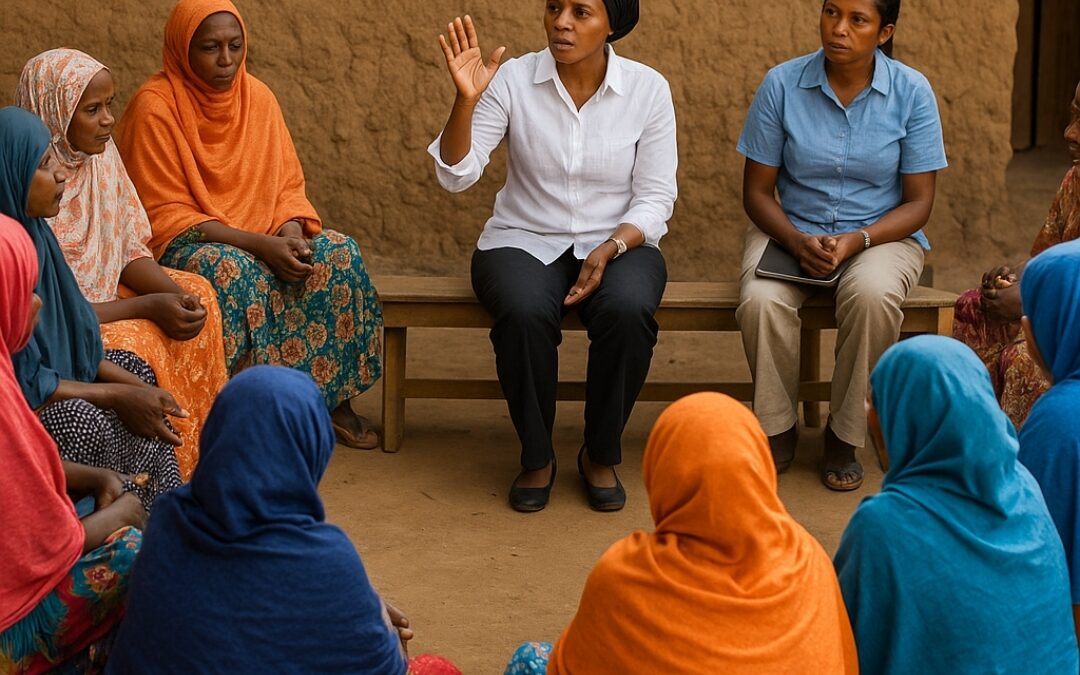In many regions of the world, practices that originated in ancient tribal societies continue to influence the lives of communities and are sometimes mistakenly viewed as religious obligations. Infibulation, one of the most severe forms of female genital mutilation, is a clear example of a custom whose roots lie entirely in cultural tradition rather than in any sacred mandate. Understanding this distinction is crucial for institutions committed to human rights, public health and sustainable development.
Historical research shows that infibulation emerged thousands of years ago in parts of North-East Africa, particularly in ancient Nubia and along sections of the Nile Valley. Its transmission across generations was linked to ideas of purity, family honour, control of female sexuality and social cohesion within small, isolated communities. Over time these beliefs spread through several regions of the Horn of Africa and the Sahel, where they continue to influence social expectations and rites of passage. The presence of this practice today in communities of different faiths confirms its cultural and not religious origin.
From a medical and psychological standpoint, infibulation has no health benefits and exposes women and girls to pain, infections, complications during childbirth, trauma and long-term physical and emotional consequences. International bodies such as the World Health Organization, UNICEF and UNFPA classify it as a harmful practice that violates human dignity and the right to health. Its impact extends beyond the medical sphere and affects education, family life and the full participation of women in social and economic development.
The persistence of infibulation is often the result of intense social pressure. In many areas parents fear community exclusion if they abandon a tradition that is perceived as necessary for the acceptance or marriage prospects of their daughters. For this reason, the challenge is not only legal or medical but also cultural, requiring education, community dialogue and the involvement of respected local figures.
The World Organization of the States – International Parliament for Safety and Peace reaffirms that the elimination of infibulation is a collective responsibility of governments, international institutions, civil society and community representatives. Protecting women and girls requires coordinated strategies that bring together health education, cultural awareness, support to families and strengthened legal frameworks. The WOS-IPSP encourages its Member States and partners to promote initiatives that help communities distinguish between cultural heritage and practices that violate fundamental rights, ensuring that tradition evolves in a way that protects human dignity and promotes the well-being of future generations.
Safeguarding the integrity of women is a measure of moral and social progress and remains an obligation recognised across the international community.
Italian
Infibulazione: un retaggio culturale e una sfida globale per i diritti umani
In molte regioni del mondo alcune pratiche nate in società tribali antiche continuano a influenzare la vita delle comunità e vengono talvolta interpretate come obblighi religiosi. L’infibulazione, una delle forme più gravi di mutilazione genitale femminile, rappresenta un esempio evidente di una consuetudine le cui radici sono interamente culturali e non religiose. Comprendere questa distinzione è essenziale per le istituzioni impegnate nella tutela dei diritti umani, della salute pubblica e dello sviluppo sostenibile.
Le ricerche storiche e antropologiche mostrano che l’infibulazione nacque migliaia di anni fa in parti dell’Africa nord-orientale, in particolare nell’antica Nubia e in alcune zone della Valle del Nilo. La sua trasmissione attraverso le generazioni fu legata a idee di purezza, onore familiare, controllo della sessualità femminile e coesione sociale all’interno di comunità isolate. Con il tempo tali credenze si sono diffuse in diverse aree del Corno d’Africa e del Sahel, dove ancora oggi influenzano aspettative sociali e riti di passaggio. Il fatto che la pratica sia presente in comunità di fedi diverse conferma la sua origine culturale, non religiosa.
Dal punto di vista medico l’infibulazione non offre alcun beneficio e comporta dolore, infezioni, complicazioni durante il parto, traumi e conseguenze fisiche e psicologiche di lunga durata. Organismi internazionali come l’Organizzazione Mondiale della Sanità, l’UNICEF e l’UNFPA la classificano come una pratica dannosa che viola la dignità e il diritto alla salute. Il suo impatto non è limitato alla sfera clinica ma incide sull’istruzione, sulla vita familiare e sulla piena partecipazione delle donne allo sviluppo sociale ed economico.
La persistenza dell’infibulazione è spesso il risultato di forti pressioni sociali. In molte aree i genitori temono l’emarginazione se rinunciano a una tradizione percepita come necessaria per l’accettazione o le prospettive matrimoniali delle figlie. Per questo motivo la sfida non è solo sanitaria o normativa, ma anche culturale, richiedendo educazione, dialogo comunitario e il coinvolgimento di figure locali autorevoli.
La World Organization of the States – International Parliament for Safety and Peace ribadisce che l’eliminazione dell’infibulazione è una responsabilità condivisa tra governi, istituzioni internazionali, società civile e comunità locali. La protezione delle donne e delle bambine richiede strategie coordinate che uniscano educazione sanitaria, sensibilizzazione culturale, sostegno alle famiglie e il rafforzamento dei sistemi legislativi. Il WOS-IPSP incoraggia i propri Stati membri e partner a promuovere iniziative che aiutino le comunità a distinguere tra patrimonio culturale e pratiche che violano i diritti fondamentali, affinché la tradizione possa evolvere nel rispetto della dignità umana e del benessere delle future generazioni.
La salvaguardia dell’integrità della donna rappresenta un indicatore del progresso morale e sociale delle società ed è un impegno riconosciuto dall’intera comunità internazionale.



